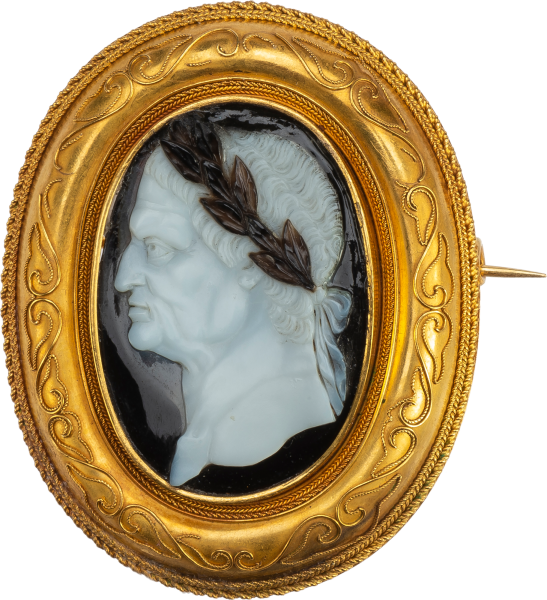


Renaissance Cameo Ring
, 16th century in a 20th century setting


Renaissance Cameo Ring
Description
Cameos depicting nude female figures became popular in the court circles of sixteenth-century Italy, where newly-formed princely collections of ancient gems served as models for contemporary hardstone artists. Following ancient practice, the artist responsible for the current cameo has cut into two layers of the multicolor agate, creating a background of milky blue that contrasts with the white flesh of the woman above. The sharp profile of the woman's face likewise recalls the art of the ancient Romans, who often used the profile view for portraits on coins, medals, and engraved gems. Continuing admiration for all types of cameos has favored their re-mounting after their original settings were lost or fell out of fashion. The current cameo is datable on stylistic grounds to the middle of the sixteenth century; the minimalist setting dates to the twentieth century.
In this oblong cameo, the bust of a woman wearing a necklace but otherwise nude stands above a blue ground. While her breast faces forward, her head is rendered in a strict profile and her hands gesture to her right. The minimalist gold setting is modern and dates to the twentieth century.
Literature
For comparisons of the cameo, see the Hashimoto Collection (published in Scarisbrick 2004, 198, 199); actual location unknown (a 16th-century-unmounted cameo showing a woman's bust in profile wearing jewelry, former Harari Collection; published in Boardman and Scarisbrick, 1977, no. 188); the Kunsthistorisches Museum, KK inv. No. XII 174 (Flemish basin with precious stones and cameos; published in Distelberger, 2002, no. 139); and inv. no. K 5572 (Italian sardonyx cameo reproducing four women in profile, from the Emperor Catherine II Collection; published in Kagan, 2000, no. 217/33); for comparable 16th-century imagery in silver niello, see the Victoria and Albert Museum (inv. nos. 873-1871; 874-1871; and 882-1871); and Hanns-Ulrich Haedecke Collection, Inv. Nr. NS1 (French pendant with a woman in profile; published in Haedeke, 2000, no. 284).
